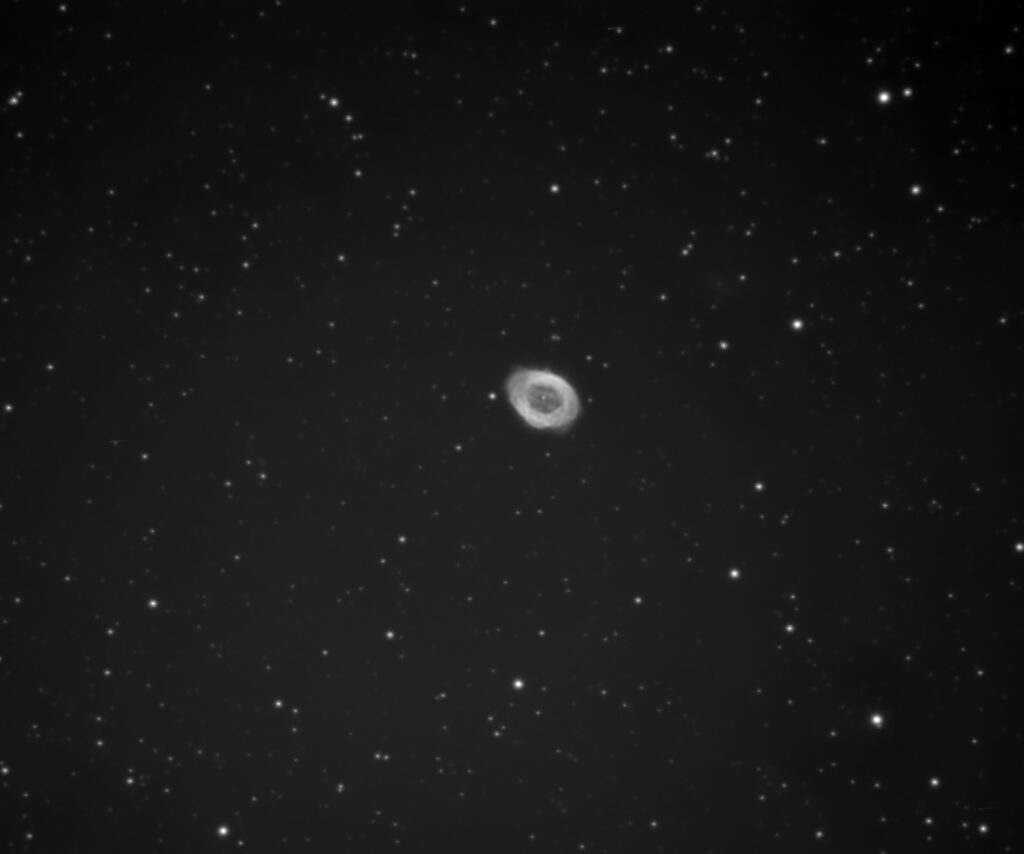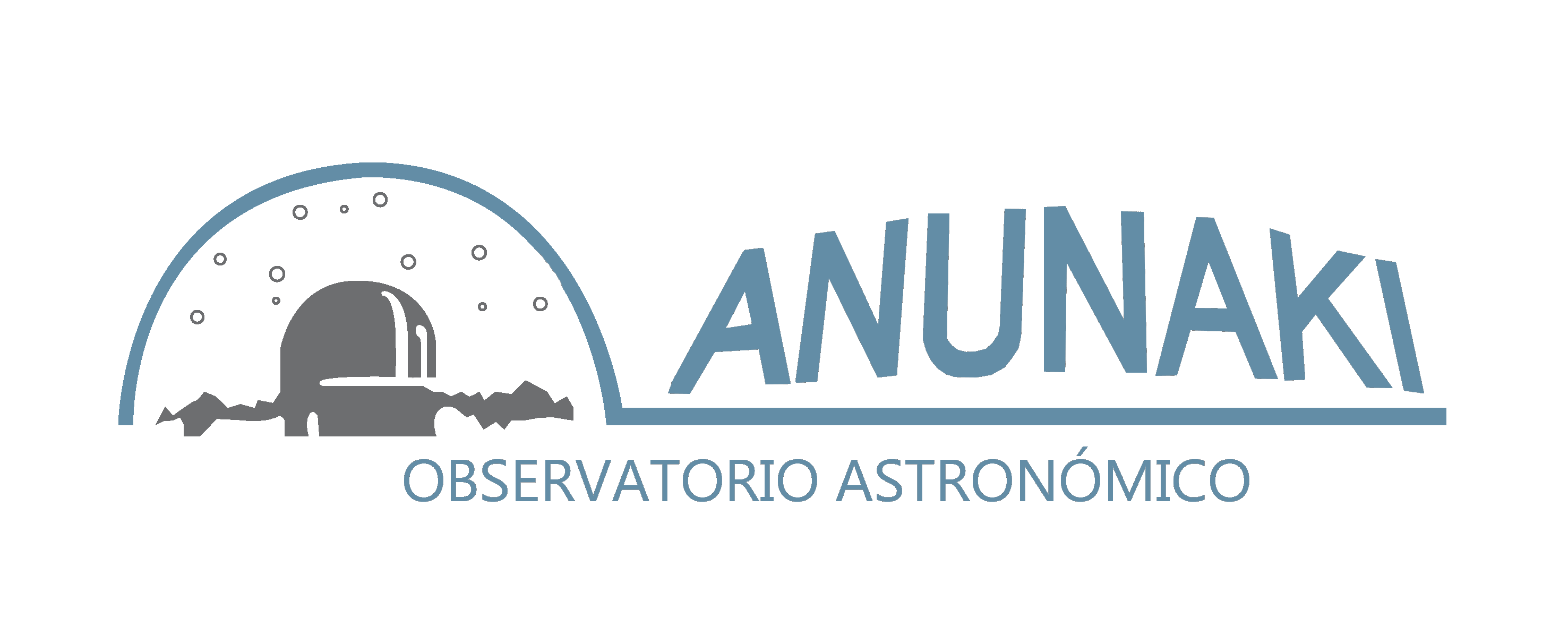The Ring Nebula (also known as the Lyra Annular Nebula, Planetary Nebula M57, Messier 57, M57 or NGC 6720) is a prototypical planetary nebula located in the constellation Lyra. It is one of the best known nebulae frequently used as an example of this type of astronomical object. It is located 0.7 kpc (2300 light years) from Earth and was discovered by the French astronomer Charles Messier on January 31, 1779. However, a few days after Messier’s discovery, astronomer Antoine Darquier de Pellepoix also observes it and comments the following: “it is a boring nebula, but perfectly delineated; as large as Jupiter and looks like a fading planet.”
M57 is illuminated by a star located at its center of visual magnitude 15.8 that is a star that has left the giant asymptotic branch and is now becoming a white dwarf. It has a luminosity 200 times higher than that of the Sun, a mass of about 0.6 solar masses, and a surface temperature of 120000 Kelvin.

Technical data:
Telescope: S/C 8″
CCD:Atik314L+
Focal Length Reducer: Meade 6.3
Filter: UHC
Telescope Guide: SkyWatcher ED80
Mount: LX200 GPSR
Guide CCD: QHY5
CCD Temp:-5º
Ambient Temp:21º/19º
Location: Anunaki Observatory / Rivas Vaciamadrid (Madrid)
The Annular Nebula is between 2000 and 5000 light-years from Earth and measures about 1 light-year in diameter. It consists of the envelope ejected by a dying star. The central star is a very hot white dwarf, faint (magnitude +15.4), but it was another larger than the Sun. Now, in the later stages of its life, the stellar core has ejected the outer atmosphere of the star into space.
The central residue is a white dwarf with the approximate size of the Earth. Unfortunately, to distinguish it even and with difficulties, you need a very dark sky without pollution, and a 330 mm telescope to detect the central star. The Hubble Space Telescope (HST) has shown that what looks like a ring has a barrel shape. More than a ring, we look at a cylindrical structure observed almost along its axis. The star can be seen with telescopes from 325 mm to 375 mm.
